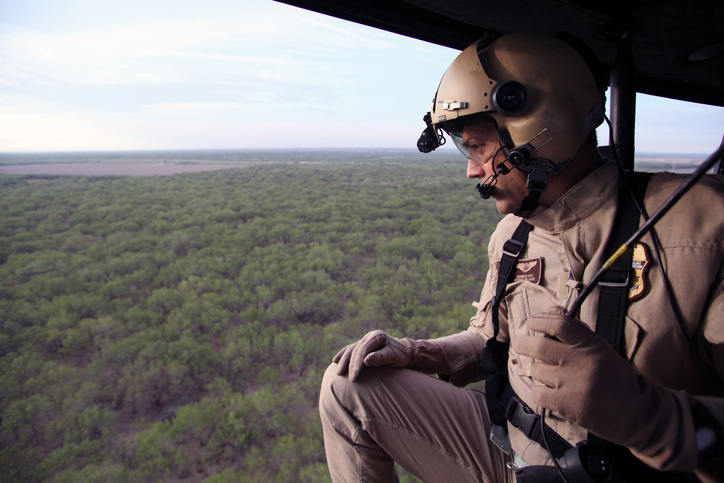This blog post is an excerpt from GovLoop’s research guide, “Fostering True Collaboration in Government
Every agency has a unique mission to fulfill. And within those agencies, there are a multitude of unique roles that must be filled to meet mission objectives. However, Department of Homeland Security (DHS) Chief Procurement Officer Soraya Correa explained that each of those support roles shouldn’t be viewed—or trained—in a silo.
In a recent interview with GovLoop, Correa described the initiatives she’s implemented at DHS to foster collaboration across disciplinary and departmental silos. She started by explaining the importance of training specialists together.
“For all of us who have specialized positions like IT, security or finance, we need certain knowledge skills, capabilities and expertise,” she said. “That’s garnered from certain types of training and certifications. But I also believe that once we have that expertise, it’s important to understand how we interact with our counterparts in the organization.”
To create that understanding, Correa advocates a cross-disciplinary approach to training and knowledge sharing at DHS. That starts with having conversations between departments, to meet common objectives. For instance, a procurement discussion should always include non-contracting personnel including the users who want the service, the finance personnel who will oversee budgeting and IT managers who will implement a solution. Similarly, a budgeting decision would include the same cohorts, even if procurement wasn’t explicitly required for the project.
Correa explained what those conversations look like for her: “I don’t expect to teach my good friends in the CIO shop how to write a contract,” she said. “But I expect to teach them to understand some of the rules that govern us, why do we do something the way we do, our drivers and some of the things that they need to be thinking about when they want to take a particular contracting action.”
Correa also said it’s critical to communicate in terms that are understandable to non-procurement professionals. “For example, every time I’ve ever met with my customers, they’ve never heard the word ‘FAR’ out of my lips. I don’t talk the language of regulation; I talk about what it takes to make it happen.” she said.
Beyond holding these clear conversations, Correa also encourages collaboration through more formal mechanisms. With former CIO Luke McCormack and other agency leaders, she established the Procurement Innovation Lab (PIL) in 2015.
PIL was created to serve two objectives. First, DHS leaders wanted a place where new, more efficient procurement techniques could be tested without fear of repercussion. PIL provides a low risk, virtual incubation space for those tests.
Second, Correa said they wanted a way to involve all DHS employees in procurement innovation efforts. PIL creates a “reciprocal learning and continuous feedback loop” to do that.
After a contract award, the PIL project team reaches out to offerors and the program office. They conduct oral interviews to assess effectiveness of the procurement process and the innovative techniques applied. The anonymous feedback is then shared with the procurement team to promote lessons learned. But, sharing doesn’t stop there. Those takeaways are also discussed with the larger DHS workforce through PIL-sponsored webinars.
Webinars are hosted on a bi-weekly basis to normalize sharing and “institutionalize learning.” Each webinar begins with a 5-minute “Tone from the Top” presentation from a government leader. This leader—who could manage any discipline from IT to finance to procurement to the program—kicks off the session by explaining why they are sharing the information and why it’s relevant to multiple roles at DHS.
Then, the webinar’s topic is more broadly discussed by multidisciplinary stakeholders to continue the theme of collaboration and sharing. “That is an example of where I bring people from all over,” Correa said. “We invite the entire acquisition community, by that I mean cost analysts, IT folks, engineers, program managers, project managers, logisticians —oh yes—and contracting people, too.”
So far, DHS is seeing significant interest in PIL. While webinar attendance started at between 40 and 50 employees, Correa said they regularly have more than 300 participants view their presentations today. DHS’s procurement innovation lab, as well as the buyer’s club established by the Department of Health and Human Services, were recognized by OMB as models for other agencies to follow.
Now, Correa is focused on expanding the collaborative methodology of PIL throughout DHS. She appointed an Acquisition Innovation Advocate to champion their agency-wide efforts, as OMB suggested. However, she also asked each individual component of the agency to assign an advocate as well. Those advocates act as a cross-departmental advisory council on acquisition, meeting once a month to share lessons learned and plan for future endeavors.
Through PIL and other efforts, Correa is determined to bring a multidisciplinary, collaborative approach to addressing the mission needs of DHS. She concluded, “If we only train ourselves and our discipline but don’t try to understand how others will perceive it, then how do we serve each other? How do we work well together? We simply can’t.”
